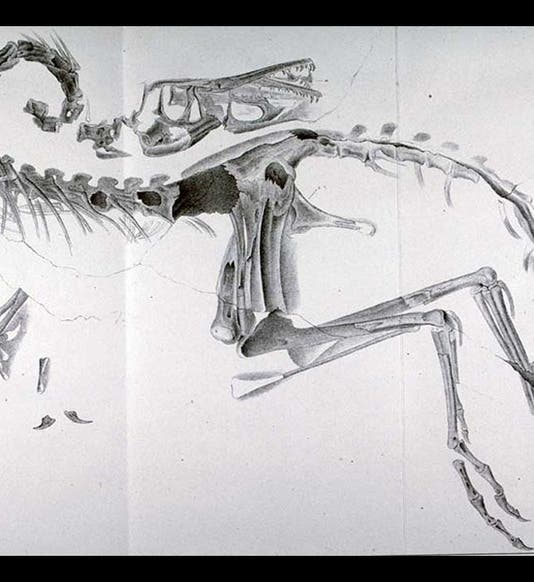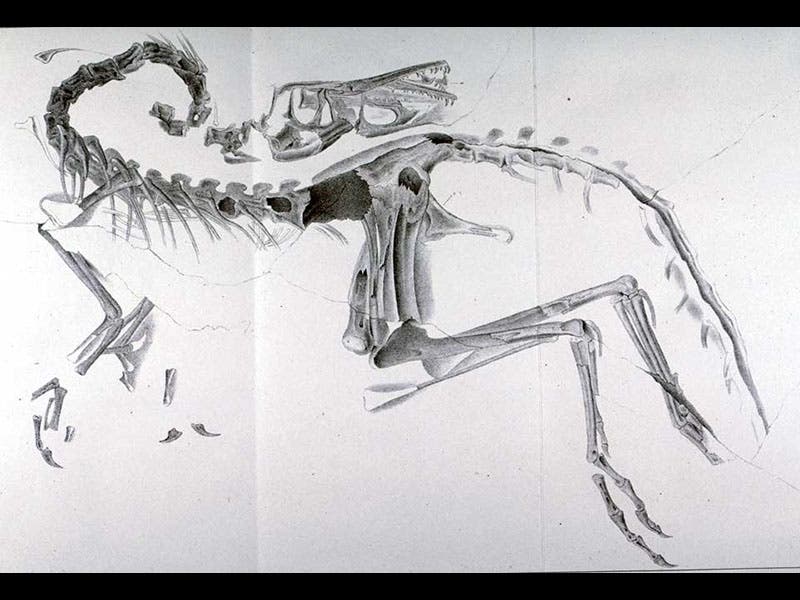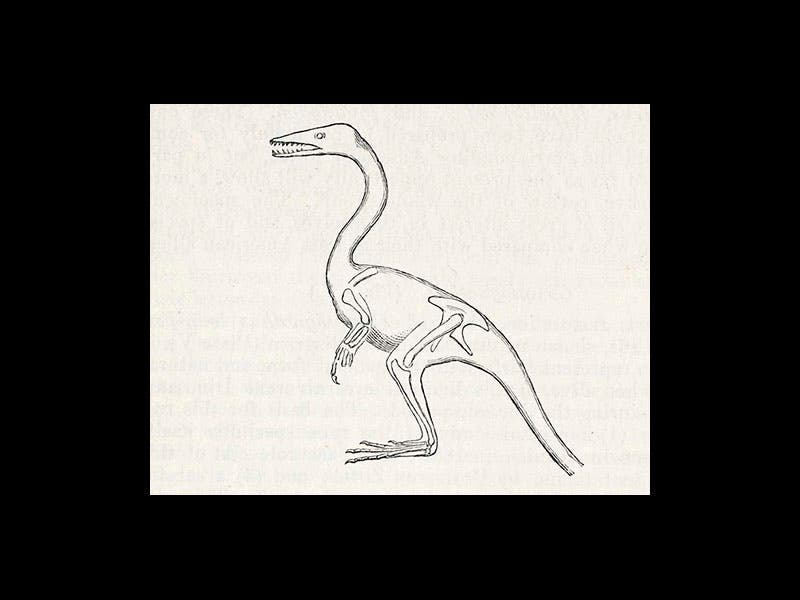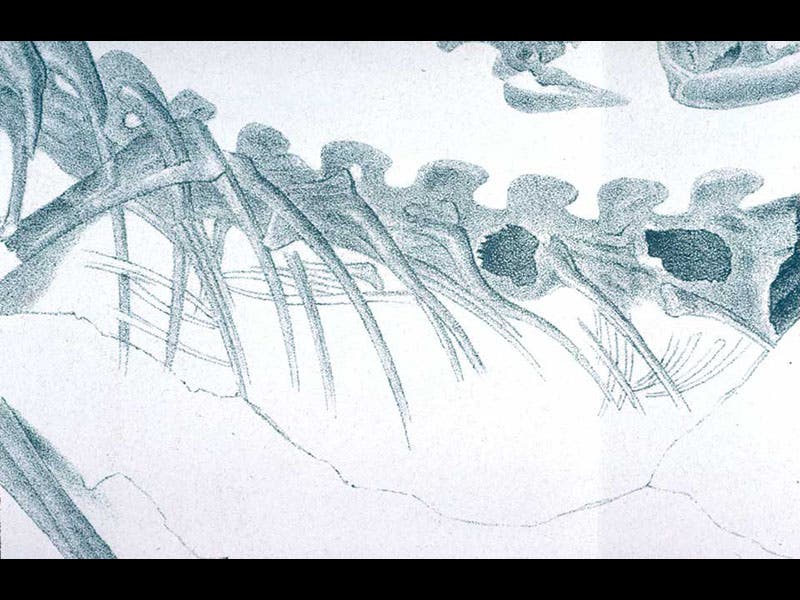Scientist of the Day - Andreas Wagner
Andreas Wagner, a German paleontologist, was born Mar. 21, 1797. Wagner was curator of the Bavarian state fossil collection in Munich, and in 1859 he found a skeleton of a small dinosaur known as Compsognathus. Those of you who saw Jurassic Park 2 might recall the "Compys," the villains of the opening scene, where a little girl discovers just where she stands in the pecking order of things. We featured Wagner's paper on Compsognathus in our Paper Dinosaurs exhibition some years ago (first image). In 1868, Thomas Huxley was prompted by the long legs and short front limbs of Compsognathus to propose, for the first time, that dinosaurs might have been bipedal like birds rather than quadrupedal like rhinos (second image).
In 1861, another fossil was found in Solnhofen, Bavaria, where most of the world's lithographic limestone was mined. This fossil was about the size of Compsognathus, but the fossil slab gave clear evidence that it had feathered wings and a feathered tail. It was named Archaeopteryx (“ancient wing”), but before Wagner could see it, the fossil was sold to the British Museum in London, where it became famous as a possible missing link, connecting birds and dinosaurs. Although he had only a description provided by an assistant, Wagner wrote a paper on the feathered fossil, in which he argued strongly that it was not even close to being a bird, and he warned "Darwinians" not to try to make too much of the fossil. He even provided what he thought was a better name, Griphosaurus, which means "enigmatic lizard". Given that paleontologists are still arguing about the status of Archaeopteryx, perhaps we should have adopted Wagner’s name. A splendid engraving was commissioned for Richard Owen’s 1863 paper on Archaeopteryx, and we displayed that as well in our exhibition (third image).
Wagner did not notice the presence of a small reptile skeleton within the ribs of Compsognathus (fourth image). Forty years later, Baron Nopcsa decided that these were the bones of a tiny lizard, remnants of Compsognathus’ last meal, a paper that we did not exhibit for Paper Dinosaurs, but which we added to the online version of that exhibition.
Dr. William B. Ashworth, Jr., Consultant for the History of Science, Linda Hall Library and Associate Professor, Department of History, University of Missouri-Kansas City. Comments or corrections are welcome; please direct to ashworthw@umkc.edu.








![Using an astrolabe to measure the depth of a well, woodcut in Elucidatio fabricae vsusq[ue] astrolabii, by Johannes Stöffler, 1513 (Linda Hall Library)](https://assets-us-01.kc-usercontent.com:443/9dd25524-761a-000d-d79f-86a5086d4774/a998eb50-55d2-4a88-ace2-a50aa5fa86e7/Stoffler%201.jpg?w=210&h=210&auto=format&fit=crop)

